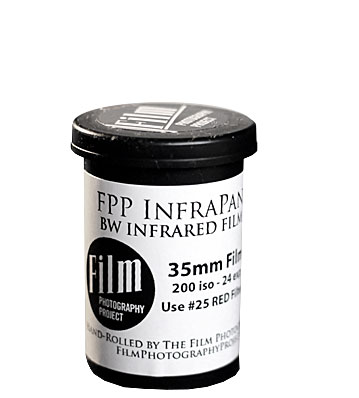
Ironically, the easiest way to shoot “real” infrared is by modding a digital camera. See, a digital sensor captures the spectrum of light wider than what our eyes can see, and is actually sensitive to IR. To prevent images looking unworldly (or just plainly having wrong exposure for our eyes), manufacturers put anti-IR coating on all digital sensors to block out IR, so there are techs who remove these coating so that cameras can capture IR. Why IR? IR from sunlight is reflected by biological things, especially leaves, producing an image that we don’t usually see. Green trees turn white where blue sky turn pitch black. You get the picture.
Unfortunately, color IR has not been produced in decades. BW film that have near-IR sensitivity can be found easily, but they are not true IR film. FPP BW infrared, from an unknown source, is supposed to be a real BW IR film and acts differently from near-IR BW film. I managed to snagged the last roll before the film was discontinued by FPP, so it is previous cargo. After waiting all throughout the summer, I managed to find a few days when it was sunny and hot, among the smokey days, to shoot this roll of film.
We planned to hike in the Mt. Jefferson wilderness when the forest were on fire. Got the shot below at Pamelia Lake, and the sun wasn’t shining as bright as I hope, thus the trees look black while the sky is brighter. However, I think I captured the mood really well. It has a little sadness with the smoke going on, and we couldn’t get away man-made issues, even though we are so far away from civilization.
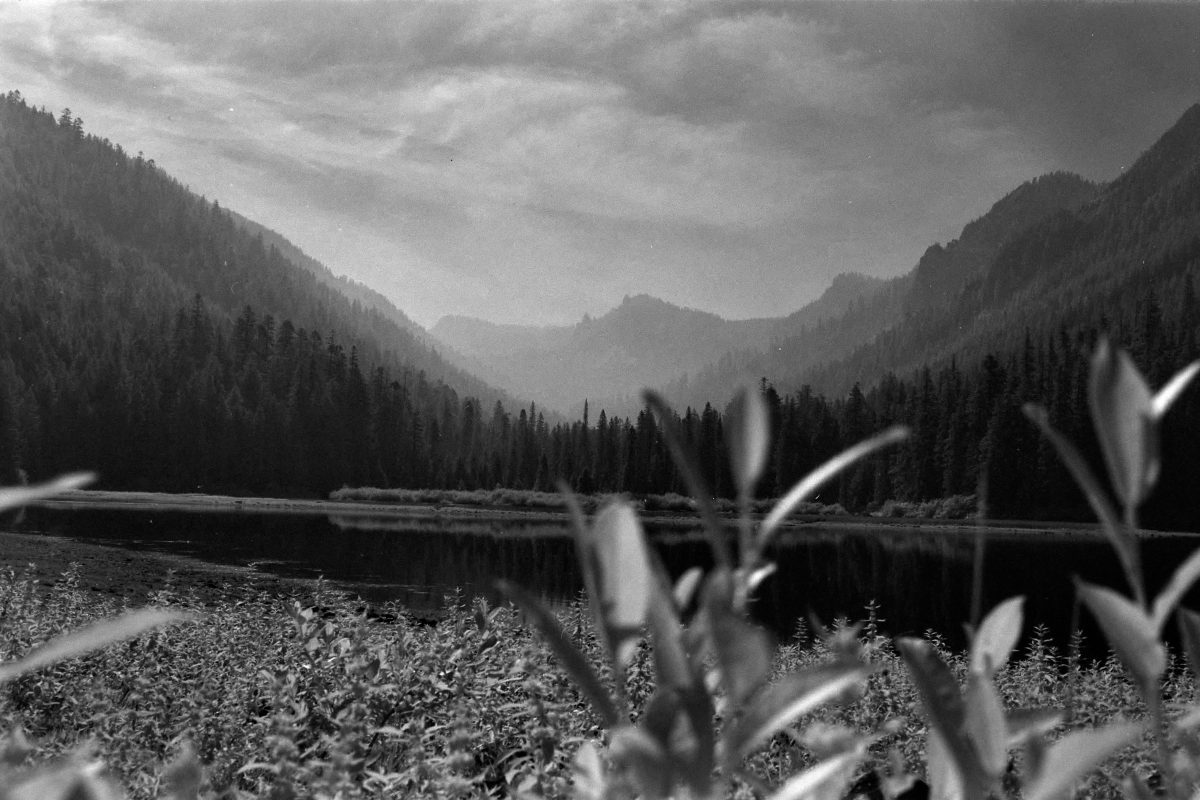
[Konica FT1 | Hexanon 35/2 | FPP IR 200]
Headed uphill to Grizzly Peak by the lake, to try to capture a glimpse of Mt. Jefferson. Actually didn’t realize we were literally by the foot of the mountain because the smoke was so thick. Most of the trail was in the trees, so there were no opportunity to shoot, but I found a break and took a quick shot. You could see the trees are white, be it in the foreground and background (except in the shade). Definitely capturing the IR. However, the sky is still no pitch black, most likely caused by the reflection from the smoke particles of the sunlight/IR.
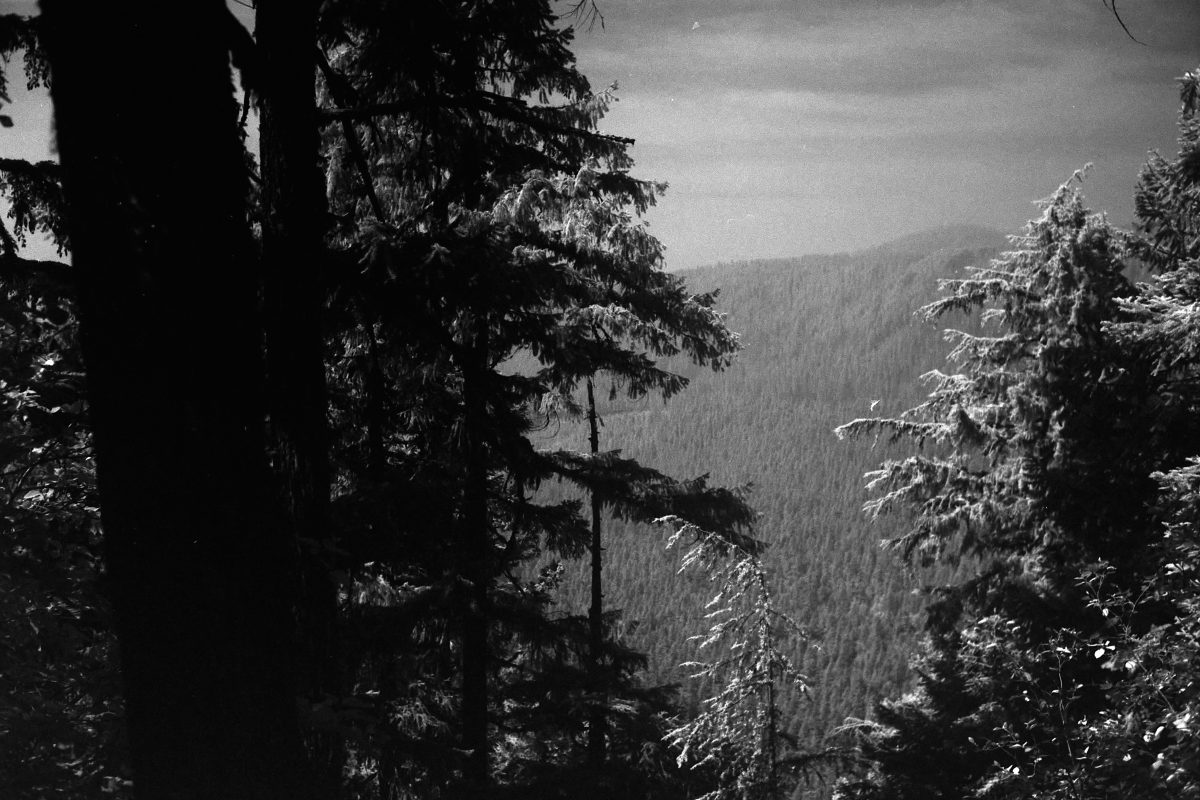
[Konica FT1 | Hexanon 35/2 | FPP IR 200]
The next day, we headed McKenzie Pass trailhead, an hour south by driving. (or 40 miles on the Pacific Crest Trail) Passes are important when traveling across mountain ranges, as they act as “valleys” and easier for cars (or mules) to pass from one side of the mountain range to the other. People have been using this pass for millenniums, but only discovered by European settlers in the mid-1800s, and took some time and effort to dig through the hard and sharp lava rocks. The lava field was from an eruption by Belknap cater (back right) around 9000 HE. It is hard the trees to grow between the lava rocks (lack of water and soil), but there are spots call kipukas that trees can grow on, thus these islands of trees among the lava rock. I think IR capture this picture just right, a stark contrast between the rock and the trees. (Also, the sky is darker!)
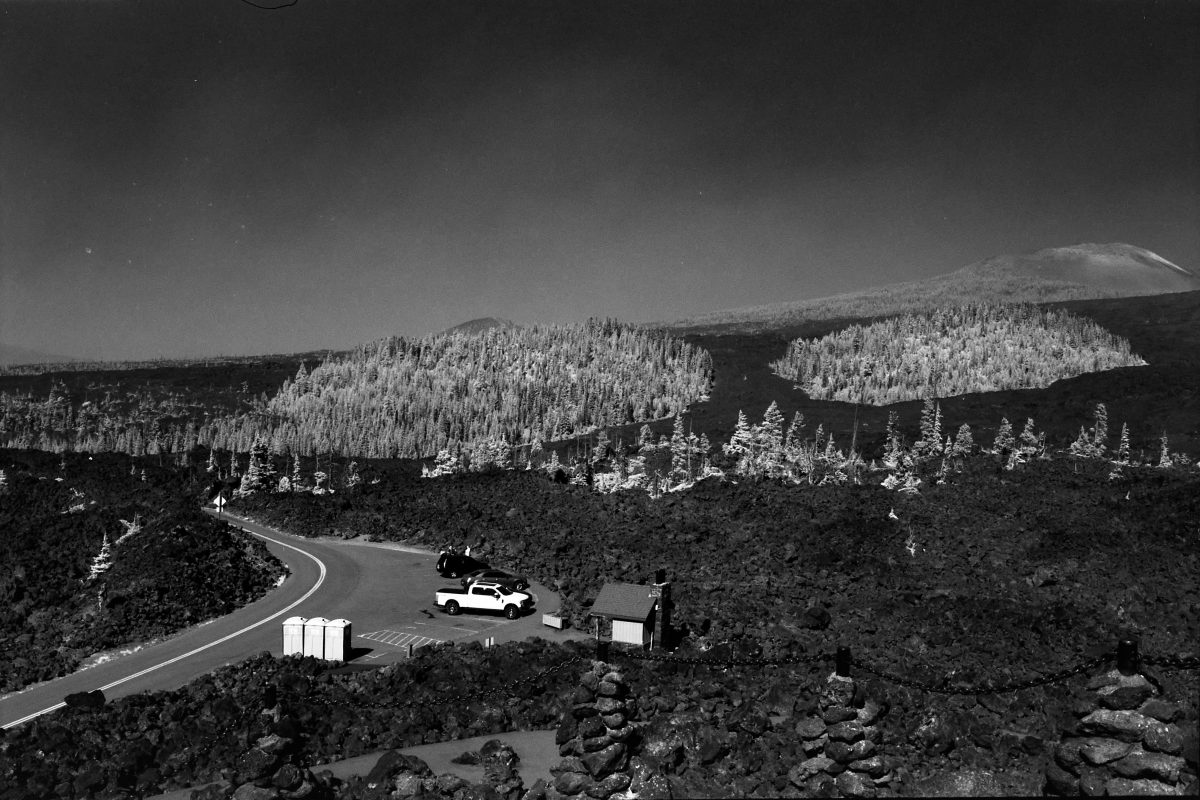
[Konica FT1 | Hexanon 35/2 | FPP IR 200]
We headed slightly south, following the PCT, towards the Matthieu Lakes, which provided a much relief from the moon-like landscape just a mile away. I love this shot, the water is pitch black (lack of IR), while the trees look like they were just snowed on.
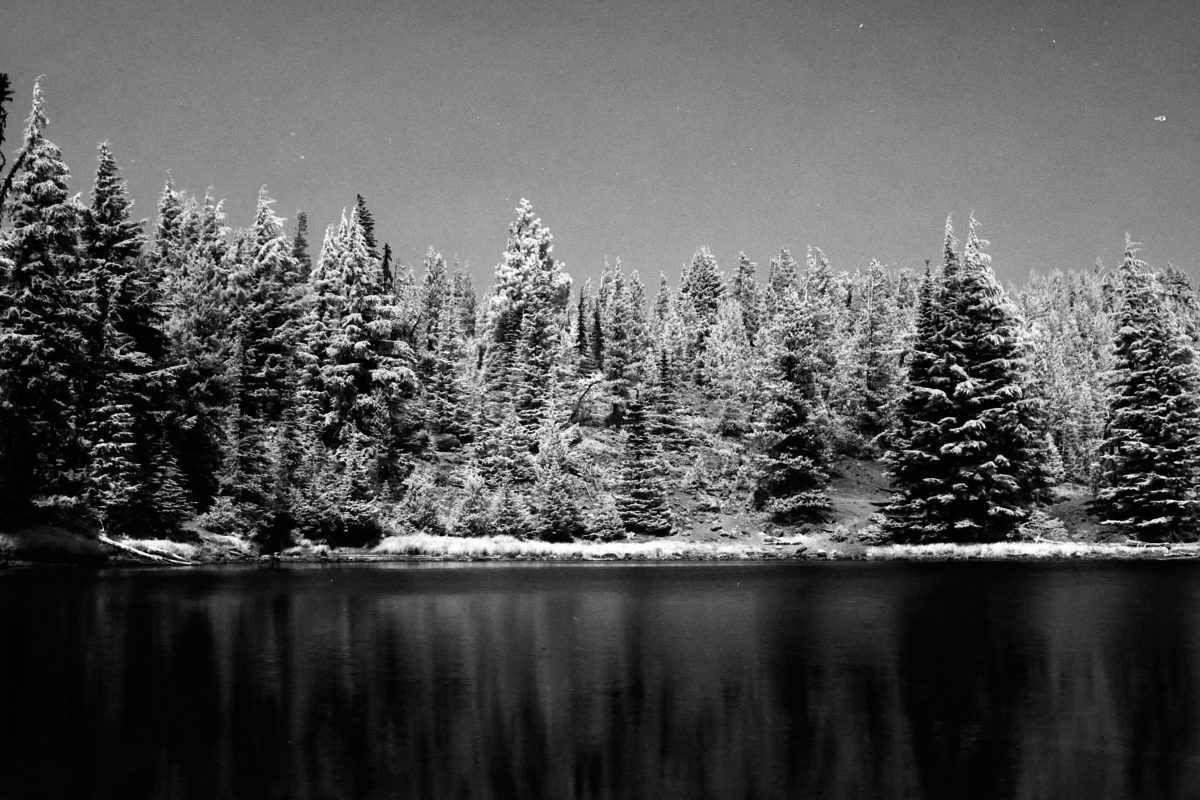
[Konica FT1 | Hexanon 35/2 | FPP IR 200]
Overall, I can’t tell if FPP Infrared is much different from other near-IR films like my go-to Rollei Infrared. Rollei’s are easily available, cheaper, and can also be used as a normal 400 BW film. (which made them more versatile, as you don’t feel bad wasting shots on days where there are just no sun/IR) If by some miracle, you managed to find one, shoot the roll and see for yourself how different it is from other BW IR film. Otherwise, don’t sweat it, you aren’t missing out with alternatives out there. Now, about color IR film (a.k.a. Aerochrome…)